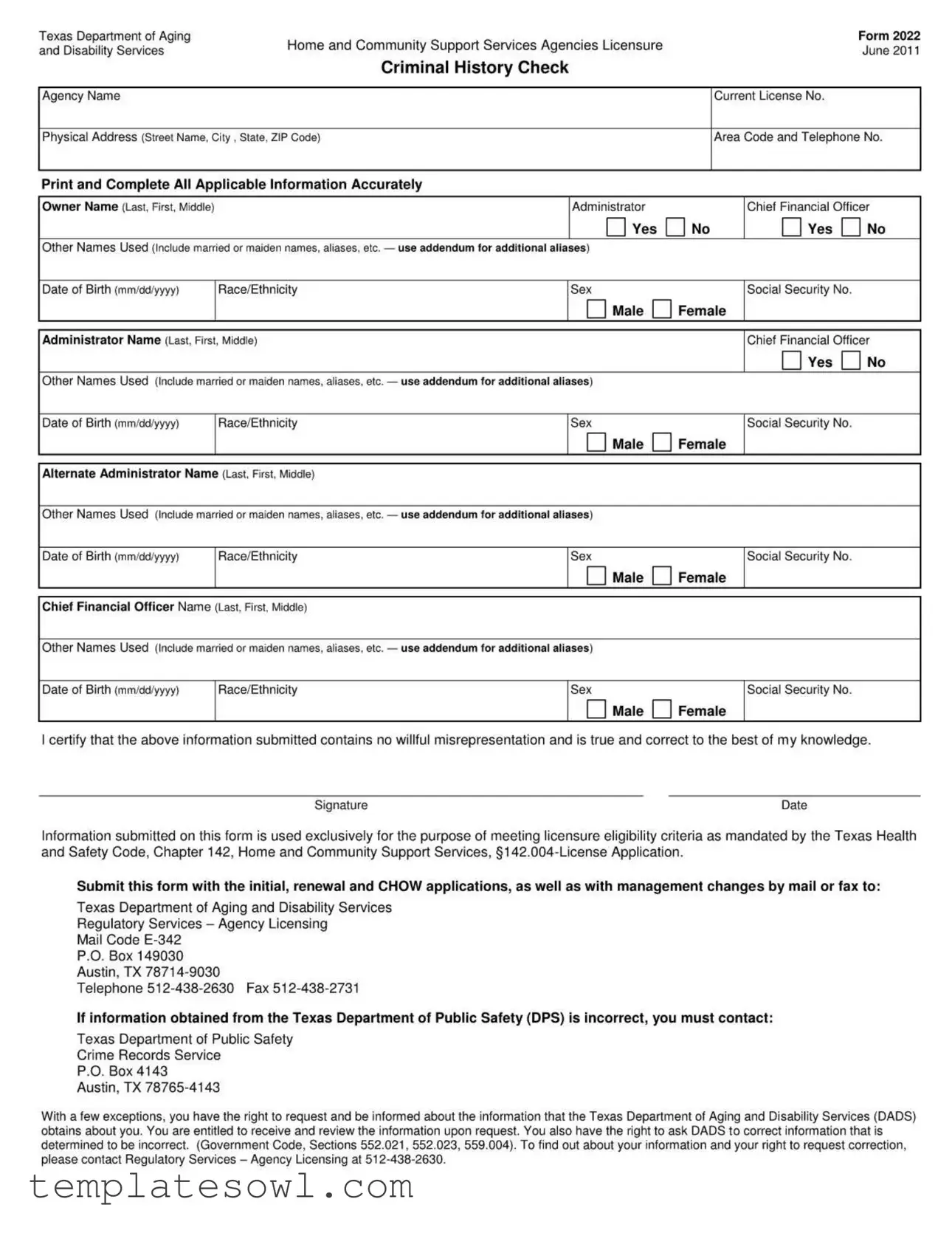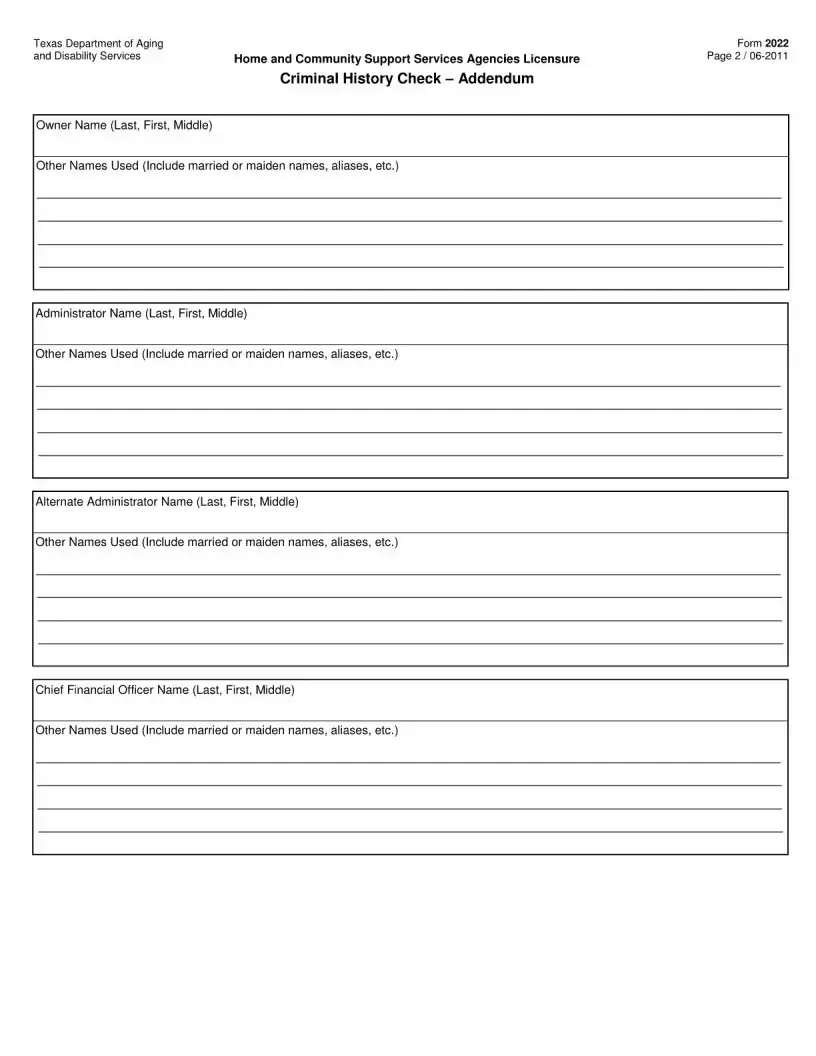Completing the Texas Department of Aging and Disability Services Agency Name Home and Community Support Services Agencies Licensure Criminal History Check Form can seem straightforward, but there are common mistakes that individuals often make. Addressing these errors can help ensure a smoother application process.
One prevalent mistake is failing to provide complete and accurate information in the required fields. The form requests detailed personal information, including names, dates of birth, and social security numbers. Omitting important details or entering incorrect data can lead to delays or even rejection of the application.
Another frequent issue is the incomplete completion of name sections. Many applicants overlook the need to list all other names used, including married or maiden names and aliases. If these sections are not fully filled out, it could cause complications during the background check process.
Individuals sometimes neglect to verify the accuracy of their social security numbers. Even one incorrect digit can create significant problems. It is advisable to double-check this critical piece of information to ensure it aligns with official records.
Additionally, some applicants forget to select their preferred sex designation on the form. This selection may seem minor, but it is essential for accurate record-keeping. Failing to make this choice can lead to misunderstanding or miscommunication regarding the applicant’s identity.
Another common oversight occurs with the signatures. The form requires a signature and date to certify the accuracy of the provided information. Failing to sign or date the document can result in immediate rejection of the application.
Moreover, some individuals may not include necessary addendums for additional aliases or names. When space on the form is insufficient, applicants must provide a printed addendum. Not doing so can lead to incomplete applications.
Finally, applicants often overlook the submission requirements. It is vital to send the completed form along with the initial, renewal, or Change of Ownership (CHOW) applications as specified. Misinterpreting submission guidelines can lead to unnecessary delays and even compliance issues.
By recognizing and avoiding these mistakes, applicants can greatly improve their chances of successfully completing the Texas form without unnecessary complications.


